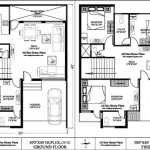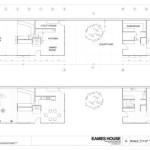Affordable Housing Plan Ontario: Addressing the Crisis and Charting a Path Forward
Ontario faces a significant affordable housing crisis, impacting individuals and families across the province. Rising home prices, stagnant wages, and limited housing supply contribute to the challenges many Ontarians face in securing safe, adequate, and affordable housing. Recognizing the severity of the situation, the provincial government has implemented various affordable housing plans and initiatives aimed at increasing housing supply, reducing costs, and supporting vulnerable populations.
The concept of affordable housing extends beyond simply providing low-cost units. It encompasses ensuring that housing costs, including rent or mortgage payments and associated utilities, do not consume an unsustainable portion of a household's income. A commonly used benchmark is that housing costs should not exceed 30% of a household's gross income. When housing becomes unaffordable, individuals and families are often forced to make difficult choices, sacrificing other essential needs such as food, healthcare, and education. This can lead to a cycle of poverty and instability, impacting overall well-being and economic productivity.
The drivers of the affordable housing crisis in Ontario are multifaceted. Rapid population growth, particularly in urban centers, has outpaced the construction of new housing units. Restrictive zoning regulations, lengthy approval processes, and limited land availability further constrain the supply of new housing. Speculation in the real estate market, coupled with low interest rates, has also contributed to escalating home prices. Furthermore, a lack of investment in social housing and supportive housing programs has left many low-income individuals and families with limited housing options.
Key Point 1: Supply-Side Solutions: Increasing Housing Stock
A central pillar of Ontario's affordable housing plan focuses on increasing the supply of housing units across the province. This involves a multi-pronged approach targeting various types of housing, including rental apartments, condominiums, and single-family homes. The government aims to streamline the development process, reduce bureaucratic hurdles, and incentivize the construction of new housing units.
One key initiative is the introduction of legislation aimed at accelerating the approval process for housing developments. This includes measures to reduce red tape, streamline permitting procedures, and promote greater coordination between different levels of government. The goal is to expedite the time it takes to bring new housing projects to market, thereby increasing the overall supply of housing and easing pressure on prices.
Another important aspect of the supply-side strategy is promoting innovative housing solutions. This includes encouraging the development of modular housing, laneway housing, and other alternative housing types that can be built more quickly and cost-effectively. The government is also exploring ways to incentivize the conversion of existing buildings into residential units, thereby increasing the housing supply without requiring new construction.
Furthermore, the province is working to unlock surplus government land for housing development. By making Crown land available for affordable housing projects, the government can reduce land costs, which are a significant component of overall housing development costs. This can help to make affordable housing projects more financially viable and encourage developers to build more affordable units.
In addition to these measures, the government is investing in infrastructure projects that support housing development. This includes funding for roads, water and sewer lines, and other essential infrastructure that is necessary to support new housing communities. By investing in infrastructure, the government can help to create the conditions necessary for housing development to thrive.
Key Point 2: Demand-Side Support: Assisting Renters and Homebuyers
Recognizing that increasing housing supply alone is not sufficient to address the affordable housing crisis, Ontario's plan also includes measures to support renters and homebuyers. These demand-side initiatives aim to alleviate the financial burden of housing costs and make housing more accessible to low- and moderate-income individuals and families.
One key program is the Ontario Housing Benefit, which provides financial assistance to low-income renters to help them afford their rent. The benefit is designed to supplement the income of eligible households, allowing them to spend a larger portion of their income on other essential needs. The amount of the benefit varies depending on the household's income, family size, and location.
In addition to the Ontario Housing Benefit, the government also offers a range of other programs to support renters. These include rent control measures, which limit the amount that landlords can increase rents each year, and tenant protection laws, which provide tenants with certain rights and protections. These measures are intended to protect renters from unfair rent increases and ensure that they have access to safe and secure housing.
For those aspiring to become homeowners, the government offers a number of programs to help them achieve their dream of homeownership. These include down payment assistance programs, which provide financial assistance to first-time homebuyers to help them with their down payment, and mortgage insurance programs, which make it easier for borrowers to qualify for a mortgage.
The government is also working to improve financial literacy among Ontarians, particularly those who are considering purchasing a home. By providing individuals with the knowledge and skills they need to make informed financial decisions, the government can help them to avoid making costly mistakes and ensure that they are well-prepared for the responsibilities of homeownership.
Key Point 3: Addressing Vulnerable Populations and Social Housing
A critical aspect of Ontario's affordable housing plan is addressing the housing needs of vulnerable populations, including individuals experiencing homelessness, seniors, people with disabilities, and Indigenous communities. These populations often face unique challenges in accessing affordable and appropriate housing, and targeted interventions are necessary to ensure that their needs are met.
The province is investing in supportive housing programs that provide housing and support services to individuals with complex needs, such as mental health issues, addiction, and disabilities. Supportive housing programs offer a stable and supportive environment that allows individuals to address their challenges and live independently in the community. These programs often include on-site support staff, access to medical care, and other services that are tailored to the individual's needs.
In addition to supportive housing, the government is also working to increase the supply of social housing units. Social housing is publicly owned or subsidized housing that is available to low-income individuals and families. The province provides funding to municipalities and non-profit organizations to build and operate social housing units. However, the demand for social housing far exceeds the supply, and waitlists for social housing units are often lengthy.
To address the shortage of social housing, the government is exploring innovative approaches to financing and delivering social housing. This includes partnerships with the private sector and community organizations to leverage their expertise and resources. The government is also working to modernize the social housing system to make it more efficient and responsive to the needs of tenants.
Furthermore, the province is committed to working with Indigenous communities to address their unique housing challenges. Indigenous communities often face significant housing shortages, overcrowding, and inadequate housing conditions. The government is working with Indigenous leaders to develop culturally appropriate housing solutions that meet the needs of Indigenous communities.
The affordable housing plan also acknowledges the aging population and the need for accessible housing options for seniors. This includes promoting the development of age-friendly housing designs and providing financial assistance to seniors to help them adapt their homes to meet their changing needs. The government is also working to improve access to long-term care facilities and other supports for seniors who require assistance with their daily living activities.
Efforts to integrate housing and healthcare are becoming increasingly important. Studies have shown a direct link between housing stability and health outcomes. Individuals experiencing homelessness or living in inadequate housing are more likely to experience health problems and utilize emergency healthcare services. By providing access to stable and affordable housing, the government can improve the health and well-being of vulnerable populations and reduce the burden on the healthcare system.
Overall, Ontario's affordable housing plan represents a comprehensive approach to addressing the affordable housing crisis. By focusing on increasing housing supply, supporting renters and homebuyers, and addressing the needs of vulnerable populations, the government aims to create a more equitable and sustainable housing market for all Ontarians. The continuing evolution and adjustments to this plan will be crucial in meeting the ever-changing demands of the housing market and ensuring that all residents have access to safe, adequate, and affordable housing.

Doug Ford S Plan To Build 1 5 Million Homes By 2031 Is In Trouble Budget Suggests Cbc News
Toronto Launches New Portal Aimed At Boosting Transparency Around Housing Plan Cbc News

Infographic Ontario S Plan To End Homelessness The Homeless Hub

Ontario Affordable Housing Plan Puts More Pressure On Municipalities Kingston Politicians Say Globalnews Ca

Council Supports Regional Plan For Affordable Housing Prince Edward County News Countylive Ca

Fifty Years In The Making Of Ontario S Housing Crisis A Timeline Canadian Centre For Rights

Close The Housing Gap Feed Ontario

What The Major Ontario Party Platforms Say About Affordable Housing Quick Connections

Ontario Risks 357m In Housing Funds Without Revised Plan Feds Cbc News

Bringing Affordable Housing Home An Action Plan For Stability In Ontario New Mode








